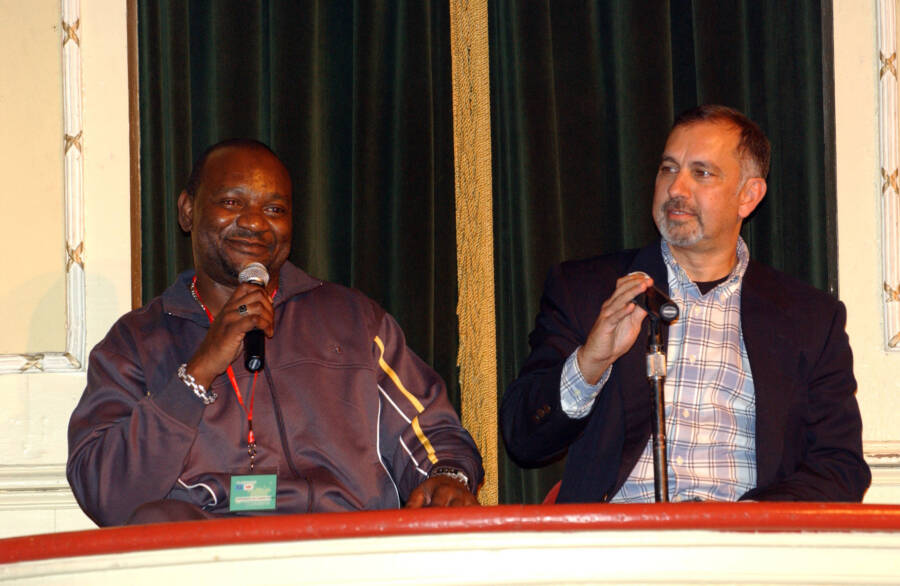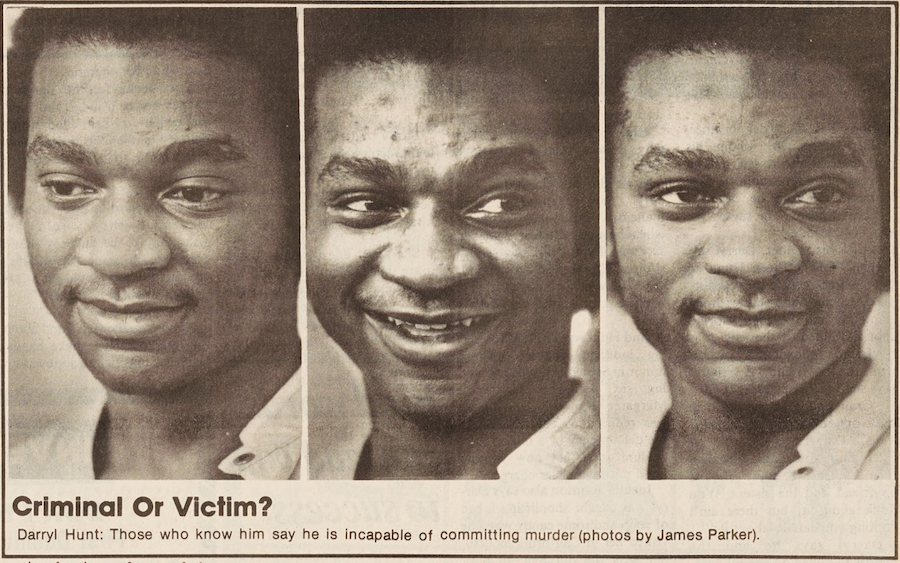Darryl Hunt’s Tragic Wrongful Conviction

ZUMA Press, Inc./Alamy Stock PhotoDarryl Hunt (left) with his lawyer after his release from prison following his wrongful conviction.
On August 10, 1984, a 25-year-old newspaper copy editor named Deborah Sykes was found brutally murdered. She’d been sexually assaulted and stabbed to death just outside of Winston-Salem, North Carolina.
According to the Innocence Project, a man named Johnny Gray called police to report the horrific murder, though he seems to have originally identified himself as Sammy Mitchell. There was another man in town by that same name, and he happened to be friends with Darryl Hunt. So, when police talked to Mitchell the day after the attack, they also spoke to Hunt.
Not long after that, another local told police he had seen Sykes with a Black man on the morning she died. His description of the man matched Hunt’s appearance, and investigators arranged a photo lineup, where the witness pointed out Hunt. Gray, meanwhile, pointed out a different man in the lineup, but later identified Hunt after he officially became a suspect.
Hunt’s girlfriend, however, said she had been with him at the time of the deadly attack — but she changed her story after she was arrested on outstanding larceny charges, saying that Hunt admitted to the murder. Although she later recanted her statement, prosecutors still presented it at trial. During the trial, Hunt made it clear that he didn’t even know who the victim was before the case, but the jury had made up their minds. Hunt was convicted on first-degree murder charges and sentenced to life in prison.

Winston-Salem ChronicleSome people expressed doubts from the beginning that Darryl Hunt could’ve committed such a brutal murder, and tragically, he ended up becoming the victim of a wrongful conviction.
In 1989, though, Hunt had a chance at freedom for the first time. The North Carolina Supreme Court overturned his conviction due to the presentation of recanted statements, and Hunt was released on bond. While awaiting a second trial, he was offered a plea bargain to be sentenced to time already served in exchange for a guilty plea. But Hunt rejected the offer.
Unfortunately, he wasn’t able to convince the court of his innocence, and he was once again convicted and sentenced to life in prison.
Then, in 1994, another major breakthrough emerged. Hunt’s attorney Mark Rabil and his colleague Ben Dowling-Sendor requested DNA testing in the case, and the results showed that Hunt’s DNA did not match the sample found on Sykes’ body at the crime scene. Hunt’s appeals were still denied, though, as the courts claimed that this did not prove his innocence.
It wasn’t until 10 years later, in 2004, that the DNA sample was ran through the state database, linking it to Willard E. Brown, who was incarcerated for a different murder. Brown then confessed to the killing of Sykes.
Finally, after about 19 years behind bars for a crime he didn’t commit, Darryl Hunt was free. A year after he got out, in 2005, he founded the Darryl Hunt Project for Freedom and Justice, a nonprofit that educates the public about criminal justice reform and fights for other wrongfully convicted individuals.
Tragically, Hunt’s story ultimately did not have a happy ending. In 2016, Darryl Hunt took his own life when he was just 51 years old.
After reading about some of the most heartbreaking wrongful convictions in modern history, dive into the true stories behind the deadliest days in American history. Then, read about seven horrifying instances of phrogging.





